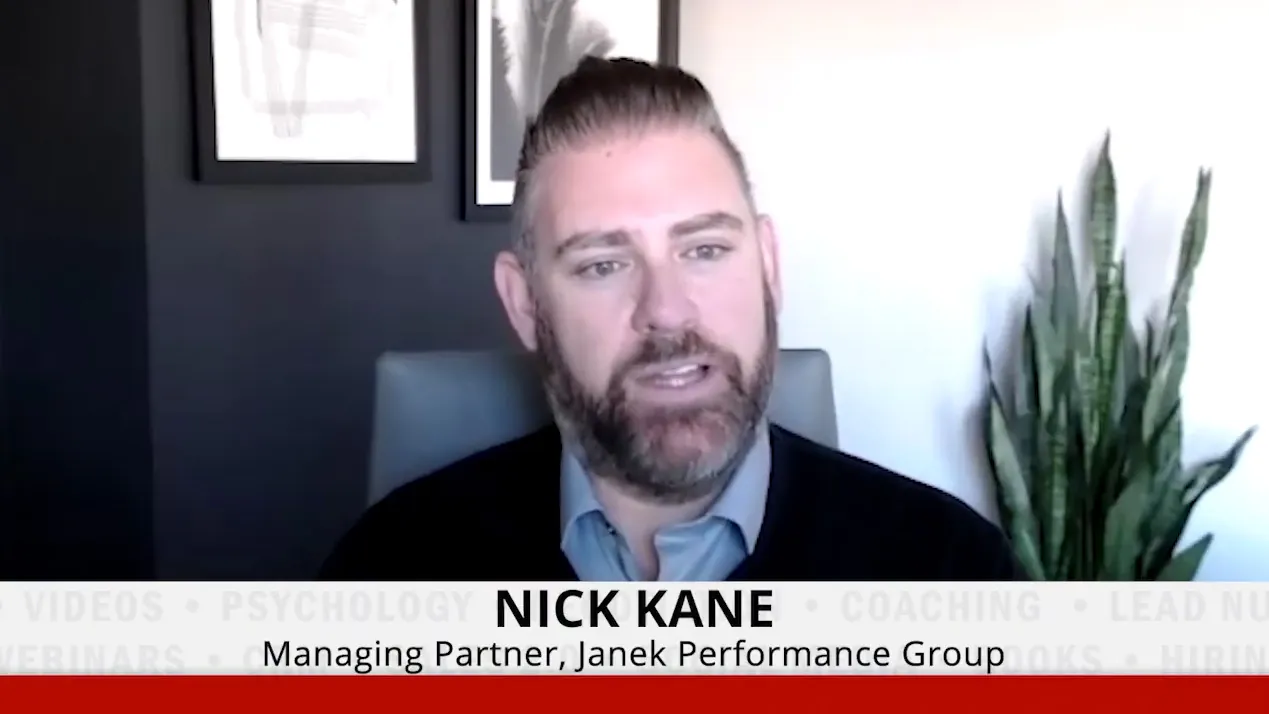The 7 Qualities of Good Readers and Writers That Sales Professionals Also Need

Recently, I was reading a piece about the qualities that make a good reader and a good writer. As I read, I was struck by how directly those qualities map on to sales professionals. To that end, we’ll be talking today about why a seller should have those qualities.
A seller should have imagination.
In sales, there’s two types of imagination.
The first type is the imagination to see or visualize. This can involve seeing surprising solutions to complex problems. You as a sales professional use your own imagination of seeing to help buyers visualize specifically how your recommended solution either solves a problem, fills a need, or propels them to even greater success than they’re currently experiencing.
The imagination of visualization is also helpful in terms of preparation for sales calls and presentations. One of the tools to have better interactions with customers is to visualize yourself being successful at those interactions and imagining possible points where they might have objections or resistance, then coming up with answers for those obstacles. We see this in sports as well. One of the recommendations sports psychologists often make to their clients is to visualize themselves having success and meeting their goals in a competition.
The second type of imagination a seller needs is that which inspires them to think creatively in terms of how to respond to curveball questions. These are the types of questions where, despite all your preparation, all your research and discovery, and all your practice, the buyer asks a question we did not anticipate. Imagination allows you to smoothly accept the question, come up with an accurate and adroit answer, and redirect the conversation back to the route it needs to go.
A seller should have memory.
At first glance, this seems obvious. After all, at bare minimum, a seller should be able to remember the details of their offerings, how those offerings slot into the most common client needs, etc. But it goes beyond that. It’s vital for a sales professional to remember the details of their clients – not only their needs and situation, but any other details that help foster a relationship – such as their interests, facts about them that can establish a personal connection, etc. And with a lot of prospects in the pipeline, that’s a lot of information to remember.
While a CRM can provide assistance here, the CRM is not a platform to stash and forget, the notes only to be summoned up when it’s time for a sales conversation. After all, you’re not always going to have immediate access to the CRM. You have to be able to recall information on command, and memory is a large part of that.
Memory is also important in acquiring new skills and knowledge in sales training, of course. No matter how much you learn from a workshop, if you don’t reinforce it and commit it from your short-term memory to your long-term one, you probably won’t remember it well enough to take that new skillset and information and transport it into your daily work. This is why we strongly encourage reinforcement strategies as part of sales performance solution packages.
But that’s not at all. Merely remembering these details and being able to use them is only the tip of the sales memory iceberg. To be a truly great sales professional, your memory needs to be so strong, so reinforced that you’re able to have sales conversations that flow naturally, as freely and comfortably as chatting with your family and closest friends.
Let me give an example. In my sales career and in training thousands of sales professionals, I’ve identified three levels of memorization that become apparent when I hear a sales rep talking to a customer:
- Little to no memorization – there’s a lot of ums, uhs, pauses, and stuttering. The sales rep is unable to recall basic facts and spends a lot of time going through notes and searching for information.
- A medium amount of memorization – there’s few filler sounds and unnatural pauses, but the sales rep is using a canned, clipped professional voice, and I can hear the prepared script in their voice, even if I’ve never seen the script.
- A high amount of memorization – The conversation flows freely and smoothly, as if the questions and discussions are occurring naturally. The sales rep is using their normal speaking voice. Even if I know there’s a script or framework they’re following, they’re speaking as if it’s occurring to them in real time.
The best and highest-performing sales rep is almost always going to be that last person.
A seller should have a dictionary.
Of course, this isn’t meant literally. But the basic concept is that you should have an extensive vocabulary. This will allow you to talk with a diverse range of buyers. It’s also a signifier of the importance of getting to know the technical terms of both your industry and the industries of your target markets. After all, if you sell medical devices to hospitals and don’t know the appropriate terminology, your odds of being successful aren’t very high.
A seller should have an artistic sense.
This one might seem a little odd, until you remember that sales is an art just as much as it is a science. While you can learn the skills and strategies to be a successful sales rep, there’s an art to putting into action.
This sense is also something that might not come with natural intuition. Rather, it’s a skill and sense that you develop over time and with experience, as you get to know the behaviors, communication styles, and thought processes of the buyers that you’re working with.
A seller should be a storyteller.
We’ve written before about the power of narrative and storytelling in sales. To quote the most relevant part:
“When you tell someone a fact or a statistic, it activates two regions of your brain that are tied to language processing and comprehension. When you tell someone a story, it lights up seven areas – not only the two involved with language processing and comprehension, but the five linked to our senses (movement is also involved, interestingly enough).
Therefore, when you use a story, your audience is literally more engaged on a neuroscientific level. Furthermore, when you give a fact wrapped in a story, your listeners are six to seven times more likely to remember the fact.
Additionally, Paul Zak, the director of the Center for Neuroeconomic Studies, found that stories which use the traditional dramatic arc (exposition – rising action – climax – falling action – denouement) released chemicals in the brain – including oxytocin (called “The Trust Hormone)”.
So harvest a collection of relevant stories that have appropriate structure. A story is a powerful sales tactic – particularly with expressive buyers, who are interested in interpersonal connections as part of building a relationship with you, and who will see the parallels between the story of the past client, the results of their sale, and how it applies to their own situation.
This is also useful for dealing with cautious and skeptical buyers – overcoming that hesitation will often require multiple strategies, and due to the neurological effects of stories, they are a useful tool to employ when helping those reluctant prospects feel safe in making the purchase.
A seller should be a trusted advisor.
By now, even the most novice sales professional knows that clients do their research before even beginning to look at possible solutions for their problem. But many times, because clients aren’t in the industry you’re in, they can misunderstand, misinterpret, or simply not know how the research they’ve done explicitly connects to solving their issue. They could, for example, be swayed into buying a solution that’s more elaborate than they currently need, or mistakenly go with an option that certainly addresses a need, but not the exact one that they have.
This is where you as a trusted advisor come in. You can provide lessons to the customer in how your offerings work and demonstrate how your recommended offering addresses the needs you’ve identified in the course of discovery. While this is certainly applicable and has relevance to all buyer types, it’s for the business-oriented and analytical buyers that this tactic will be especially effective. After all, this is the group that wants to understand with thorough specifics and details, and many of them have the intellectual curiosity that will make them want to know as much as possible about the different solutions and why they work or don’t work for the buyer’s own unique situation.
A seller should be an enchanter.
We don’t mean casting spells or anything like that here. But what we do mean is the kind of magic that’s involved in sales – that wondrous ability to be able to guide the buyer from their current situation to a much better, more successful one that improves their company and makes their work that much more lucrative, enjoyable, easier, and/or effective.
There’s also a kind of magic (and imagination, to tie in the first quality) in helping your customers to envision what life will be like after concluding the contract with you – the benefits and improvements they’ll realize from implementing the solution. This tactic is especially effective in dealing with visionary buyers who aren’t as concerned with the nitty gritty details, but want to be able to visualize and imagine how their lives or their organization will look after the solution has been implemented.
Also important to know: You’ll want to be very careful about using this strategy with business-oriented and cautious buyers. Those who have been exposed to hyped sales pitches that promised much that wasn’t delivered will disengage at overly flowery depictions of the post-implementation vision. If you do believe that presenting a vision will work for them, keep it grounded in their language and make it as realistic a picture as possible. Far better to under-promise and then over-deliver than risk the reverse.
As a sales professional, you are a storyteller who uses stories as proof of concept, a trusted advisor who provides lessons and information to clarify things for buyers, and an enchanter who uses the magic of imagination to help your customers envision a brighter, better world because they’ve literally bought in to your solution.

- Account Planning (11)
- Awards (49)
- Client Testimonial (37)
- Personal Branding (19)
- Podcast (11)
- Research (70)
- Sales Career Development (87)
- Sales Coaching (156)
- Sales Consulting (137)
- Sales Culture (170)
- Sales Enablement (354)
- Sales Leadership (109)
- Sales Management (248)
- Sales Negotiation (16)
- Sales Prospecting (125)
- Sales Role-Playing (18)
- Sales Training (235)
- Selling Strategies (263)
- Soft Skills (70)
- Talent Management (94)
- Trusted Advisor (27)
- Virtual Selling (49)
- Webinar (9)


























